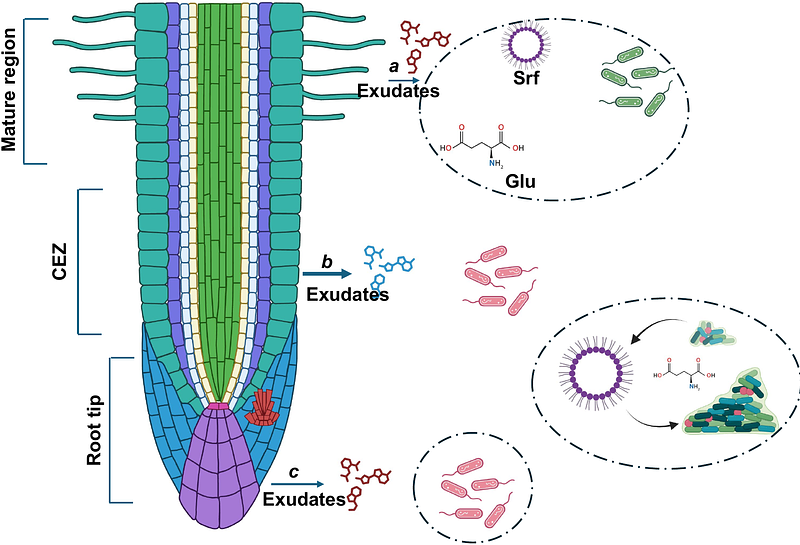The influence of surfactin and glutamate on tomato root association by plant growth promoting rhizobacteria Bacillus subtilis

The influence of surfactin and glutamate on tomato root association by plant growth promoting rhizobacteria Bacillus subtilis
Warthen, R.; Cabales, A.; Wockenfuss, A.; Kunjapur, A. M.; Bais, H.
AbstractThe influence of microbially and plant synthesized compounds on attachment of plant growth promoting rhizobacteria (PGPR) to various regions of the plant root are underexplored. Here, we examine the influence of surfactin and glutamate on the level and specificity of attachment of Bacillus subtilis along different regions of tomato root using chemical and genetic perturbations. First, we modify Bacillus subtilis PY79 to express a full-length phosphopantetheinyl transferase (sfp) native to other B. subtilis strains, and we observe surfactin biosynthesis under static incubation at 25oC in plant culturing media. We then perform microscopy using the wild-type PY79 strain, the sfp+ strain, and the wild isolate B. subtilis UD1022 to map the attachment of each strain along the entire root of young tomato plants incubated at 25oC, including when exogenously supplementing surfactin or glutamate. Through root mapping, we show that these strains prefer to attach near the mature region (MR) of the root and that colonization patterns vary based on exogenous metabolite concentration. Inclusion of glutamate in the media or through transient priming of the plant prior to bacterial inoculation strongly promoted root colonization by B. subtilis strains (both surfactin null and producers). In addition, the data shows that the domesticated strains were less efficient in binding compared to the wild B. subtilis strain. Interestingly, in the presence of glutamate, microbes lost their preference for association at the mature region, instead colonizing along the entire root. Overall, our work reveals a preference for association of these B. subtilis strains to the mature region of tomato in the absence of glutamate supplementation, confirms a strong influence of glutamate on root association, and demonstrates a smaller than anticipated role of biosynthesized or supplemented surfactin on root association, at least in a hydroponic culturing format.